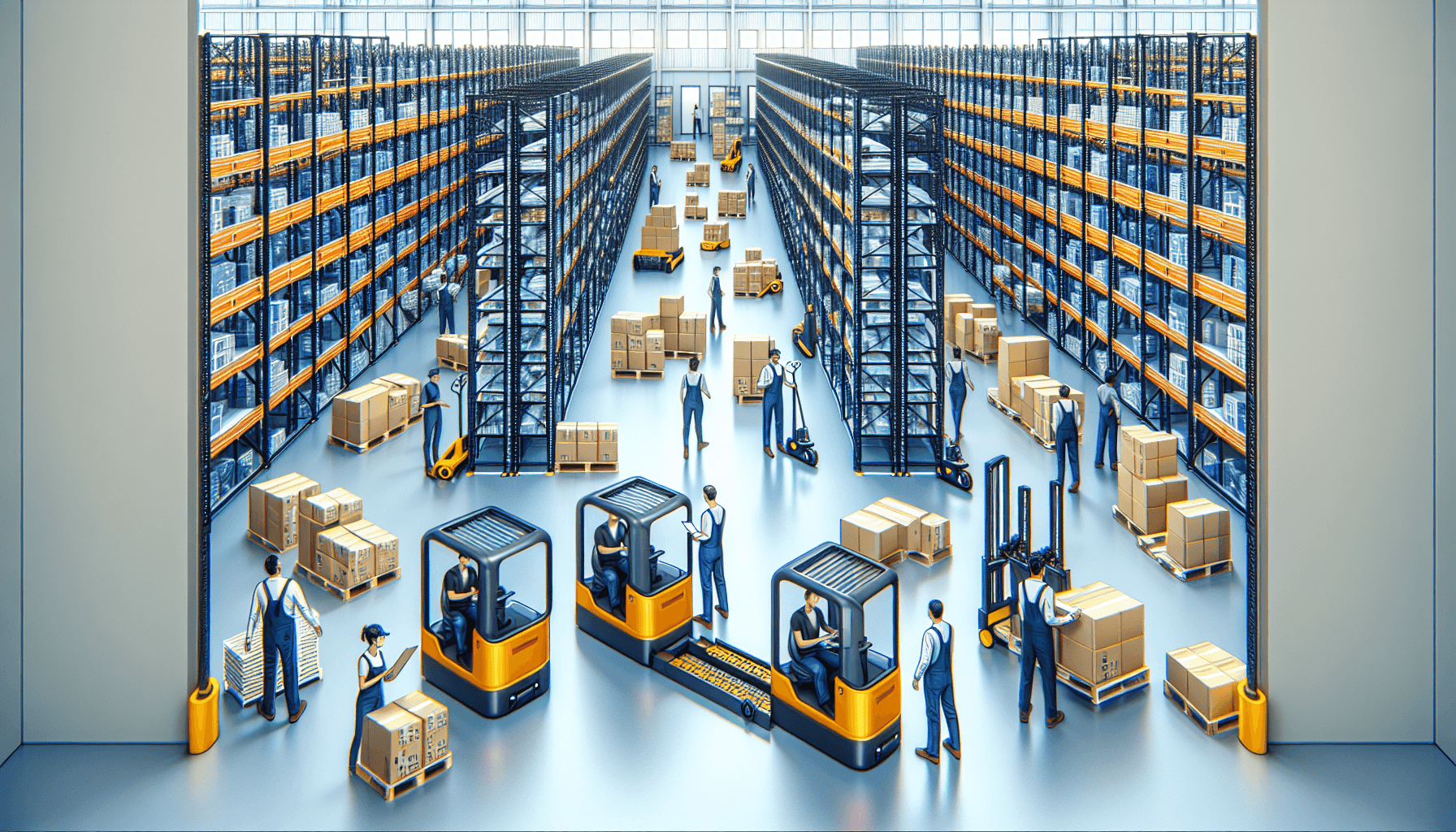In today’s fast-paced world, collaboration and efficiency are key factors that determine the success of any warehouse operation. Warehouse managers are constantly looking for innovative solutions to enhance workforce collaboration and streamline their operations. One such solution that has gained significant popularity in recent years is the use of Automated Guided Vehicles (AGVs). These intelligent and versatile machines are revolutionizing the way warehouses function and can significantly improve workforce collaboration. In this article, we will explore how AGVs enhance warehouse workforce collaboration and the benefits they bring to the table.
The Role of AGVs in Warehouse Workflow
Before diving into the details of how AGVs enhance workforce collaboration, it is important to understand the role they play in the overall warehouse workflow. AGVs are autonomous vehicles that are designed to move and transport goods within a warehouse without the need for human intervention. They are equipped with advanced technologies such as sensors, cameras, and onboard computers, which allow them to navigate through the warehouse, avoid obstacles, and carry out various tasks.
AGVs can be programmed to perform a wide range of tasks, including picking and placing items, transporting goods from one location to another, and even loading and unloading trucks. By automating these repetitive and labor-intensive tasks, AGVs free up the workforce to focus on more complex and value-added activities, thereby enhancing collaboration between human workers and machines.
Improved Safety and Reduced Accidents
One of the key benefits of using AGVs in the warehouse is the improved safety they bring to the workplace. Traditional material handling equipment such as forklifts can pose serious safety risks, especially in busy warehouse environments. Accidents involving forklifts can lead to injuries, damage to goods, and costly downtime.
AGVs, on the other hand, are equipped with a range of safety features such as obstacle detection sensors and collision avoidance systems. These features enable AGVs to navigate the warehouse environment safely and avoid collisions with other vehicles or obstacles. By eliminating the risk of accidents, AGVs create a safer working environment for the warehouse workforce, fostering better collaboration and peace of mind.
Increased Productivity and Efficiency
AGVs are known for their ability to increase productivity and efficiency within warehouse operations. These machines can operate 24/7 without the need for breaks or rest, allowing for round-the-clock operation. This means that tasks such as order fulfillment, inventory replenishment, and goods transportation can be carried out faster and more efficiently, ultimately improving the overall productivity of the warehouse.
Additionally, AGVs can be integrated with warehouse management systems (WMS) and other software solutions to optimize their routes and tasks. By leveraging real-time data and algorithms, AGVs can choose the most efficient paths, avoid congestions, and prioritize tasks based on urgency. This level of optimization not only improves efficiency but also minimizes downtime and ensures smooth collaboration between AGVs and human workers.
Flexibility and Scalability
AGVs offer a high degree of flexibility and scalability, making them suitable for a wide range of warehouse environments. These machines can be programmed to adapt to changing operational needs, allowing for quick and seamless reconfiguration of workflows. Whether it’s changing the layout of the warehouse, adding new storage racks, or introducing new processes, AGVs can easily be integrated into the existing infrastructure, enabling warehouse managers to scale their operations without major disruptions.
Enhanced Workforce Collaboration
Now that we have explored the various benefits of using AGVs in the warehouse, let’s shift our focus to how they enhance workforce collaboration. AGVs act as valuable assistants to the warehouse workforce, taking on repetitive and physically demanding tasks, and freeing up time for human workers to focus on more complex and cognitive tasks.
With the assistance of AGVs, warehouse workers can collaborate more effectively with each other and with the machines. For example, instead of spending hours manually transporting goods from one location to another, workers can rely on AGVs to handle these tasks, allowing them to work together on more critical activities such as order processing, quality control, or problem-solving.
AGVs can also support collaboration through their ability to communicate with other devices in the warehouse ecosystem. They can exchange data with warehouse management systems, inventory control systems, and even communicate with other AGVs. This seamless integration enables real-time data sharing, better coordination, and improved collaboration between AGVs and human workers.
AGVs also contribute to a more positive and inclusive work environment. By automating physically demanding tasks, they reduce the risk of injuries and fatigue among workers, leading to greater job satisfaction and overall well-being. This, in turn, fosters a collaborative culture where workers can focus on their strengths and work together more efficiently.
Conclusion
In conclusion, the adoption of AGVs in warehouse operations brings numerous benefits, including improved safety, increased productivity, flexibility, and better scalability. However, one of the most significant advantages lies in the enhancement of workforce collaboration. By taking on repetitive and physically demanding tasks, AGVs allow human workers to focus on more critical activities, promoting better collaboration, and maximizing the overall potential of the warehouse workforce. If you are interested in deploying AGVs in your warehouse, be sure to visit HCO Innovations for more information and expert guidance.

